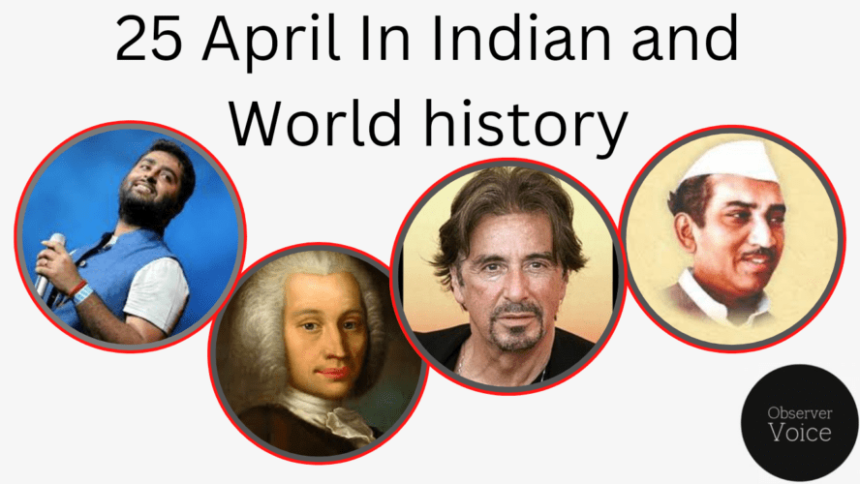The Significance of March 29th in World History
March 29th marks a day of historical importance across various cultures and periods, highlighting events that have shaped the world we live in today. From pivotal battles to scientific breakthroughs and political milestones, this date reflects the diverse tapestry of human achievements and struggles. Let’s delve into some of the key events that occurred on March 29th throughout history.
1. 1799: New York passes gradual emancipation law
On March 29, 1799, the state of New York passed a gradual emancipation law, marking a significant step in the abolition of slavery in the United States. The law stipulated that children born to enslaved mothers after July 4, 1799, would be freed after serving a period of indentured servitude. While this law did not abolish slavery outright, it reflected growing sentiments against the institution and paved the way for future abolitionist movements.
2. 1849: The United Kingdom formally annexes Punjab
In 1849, the British East India Company officially annexed the Sikh Empire’s territory in Punjab, India, following the Second Anglo-Sikh War. This event consolidated British control over the region and marked a significant turning point in British colonial rule in India, leading to further centralization of power under British authority.
3. 1867: Queen Victoria grants royal assent to the British North America Act
March 29, 1867, is a pivotal date in Canadian history as Queen Victoria granted royal assent to the British North America Act, also known as the Constitution Act, 1867. This act laid the foundation for the confederation of Canada, uniting the provinces of Ontario, Quebec, New Brunswick, and Nova Scotia into the Dominion of Canada, a self-governing entity within the British Empire.
4. 1886: Dr. John Pemberton brews the first batch of Coca-Cola
In Atlanta, Georgia, Dr. John Pemberton brewed the first batch of Coca-Cola on March 29, 1886. Initially intended as a patent medicine, Coca-Cola would go on to become one of the world’s most iconic and widely consumed soft drinks, shaping global consumer culture and branding practices.
5. 1945: Last day of V-1 flying bomb attacks on London
During World War II, March 29, 1945, marked the last day of V-1 flying bomb attacks on London by Nazi Germany. These indiscriminate bombings targeted civilian populations and caused significant destruction and loss of life during the war. The end of these attacks signaled a turning point as Allied forces gained momentum in their push towards victory in Europe.
6. 1974: The Terracotta Army is discovered in China
On March 29, 1974, farmers digging a well near Xi’an, China, stumbled upon one of the most remarkable archaeological discoveries of the 20th century: the Terracotta Army. This vast collection of life-sized terracotta sculptures depicting the armies of Qin Shi Huang, the first Emperor of China, dates back to the late third century BCE and serves as a testament to ancient Chinese artistic and military prowess.
7. 2004: Bulgaria, Estonia, Latvia, Lithuania, Romania, Slovakia, and Slovenia join NATO
In a significant expansion of the North Atlantic Treaty Organization (NATO), seven Central and Eastern European countries—Bulgaria, Estonia, Latvia, Lithuania, Romania, Slovakia, and Slovenia—officially joined the alliance on March 29, 2004. This expansion underscored NATO’s evolving role in ensuring collective security and stability in a changing geopolitical landscape following the Cold War.
8. 2014: Afghanistan signs Bilateral Security Agreement with the United States
On March 29, 2014, Afghanistan signed the Bilateral Security Agreement (BSA) with the United States, outlining the legal framework for continued U.S. military presence and cooperation in Afghanistan after the formal conclusion of combat operations. The agreement aimed to support Afghanistan’s security and stability efforts while addressing ongoing challenges in the region.
March 29th in Cultural and Scientific Milestones
Beyond historical events, March 29th is also associated with notable cultural and scientific milestones that have left a lasting impact on society:
1. 1974: The Great Gatsby wins Pulitzer Prize for Fiction
F. Scott Fitzgerald’s timeless novel “The Great Gatsby” was posthumously awarded the Pulitzer Prize for Fiction on March 29, 1974. The novel, set in the Roaring Twenties, continues to be celebrated for its exploration of American identity, wealth, and the American Dream.
2. 2004: Ireland bans smoking in all workplaces
March 29, 2004, marked a significant public health milestone as Ireland became the first country in the world to ban smoking in all workplaces, including bars and restaurants. This landmark legislation aimed to reduce exposure to secondhand smoke and promote healthier environments for workers and the public.
3. 2008: Chinese scientists announce discovery of 2,300-year-old mummy
On March 29, 2008, Chinese archaeologists announced the discovery of a well-preserved 2,300-year-old mummy in the Tarim Basin of Xinjiang, China. The mummy, known as the “Beauty of Xiaohe,” provided valuable insights into ancient burial practices and genetic ancestry in the region, contributing to our understanding of human history and migration patterns.
4. 2016: Batman v Superman: Dawn of Justice premieres
The superhero blockbuster “Batman v Superman: Dawn of Justice” premiered on March 29, 2016, showcasing an epic showdown between two iconic comic book characters. The film’s release generated widespread anticipation and discussion among fans and marked a milestone in the interconnected universe of DC Comics adaptations on the big screen.
Exploring India’s History and March 29th Significance
India’s history is a tapestry woven with threads of diverse cultures, religions, and traditions, spanning millennia of civilization and change. March 29th, in particular, holds significance in Indian history through various events that have shaped the nation’s journey towards independence, cultural development, and technological advancement. Let’s delve into India’s rich history and explore the special significance of March 29th.
Ancient India: Civilization and Cultural Flourishing
Ancient India boasts a rich heritage of Indus Valley Civilization, the Vedas, and diverse cultural exchanges. From the Harappan cities to the Mauryan and Gupta empires, India witnessed advancements in art, architecture, and governance that laid the foundation for its cultural identity.
Medieval Period: Dynasties and Cultural Synthesis
The medieval period saw the rise and fall of several dynasties such as the Cholas, Delhi Sultanate, Vijayanagara Empire, and Mughal Empire. It was a time of cultural synthesis, marked by the fusion of Hindu, Islamic, and indigenous traditions in art, music, and literature.
British Colonial Rule: Impact and Resistance
March 29th gains relevance in India’s struggle against British colonialism, a period marked by exploitation, socio-economic changes, and movements for independence.
1. The Rowlatt Act and Jallianwala Bagh Massacre
March 29, 1919, is a somber day in Indian history due to the events surrounding the Rowlatt Act and the Jallianwala Bagh massacre:
- Rowlatt Act: Passed on March 18, 1919, by the British government, this act allowed for the arrest and detention of individuals without trial, sparking widespread protests across India.
- Jallianwala Bagh Massacre (April 13, 1919): On April 13, 1919, in Amritsar, Punjab, British troops under General Dyer opened fire on unarmed civilians gathered at Jallianwala Bagh, resulting in hundreds of deaths and injuries. The massacre remains a poignant symbol of British oppression and Indian resilience.
2. Bhagat Singh’s Arrest
On March 29, 1929, revolutionary freedom fighter Bhagat Singh was arrested for his involvement in the Lahore Conspiracy Case. Bhagat Singh’s dedication to India’s independence and his sacrifice continue to inspire generations of Indians.
The Independence Movement: Struggles and Triumphs
India’s struggle for independence gained momentum through non-violent movements led by Mahatma Gandhi, Jawaharlal Nehru, Subhas Chandra Bose, and others. Key events shaped the path to freedom:
- Salt March (Dandi March): On March 12, 1930, Gandhi embarked on the Salt March, a symbolic protest against British salt taxes, culminating in the iconic breaking of salt laws at Dandi on April 6, 1930.
- Quit India Movement: Launched on August 8, 1942, the Quit India Movement demanded an end to British rule in India, leading to widespread civil disobedience and paving the way for eventual independence in 1947.
Post-Independence India: Nation Building and Challenges
India’s independence on August 15, 1947, marked a new chapter in its history, characterized by efforts towards nation-building, economic development, and social progress amid challenges such as partition, communal tensions, and economic disparities.
1. India’s Nuclear Test: Pokhran-II
On May 11 and 13, 1998, India conducted a series of nuclear tests at Pokhran, Rajasthan, under the leadership of Prime Minister Atal Bihari Vajpayee. The tests, codenamed Operation Shakti, demonstrated India’s nuclear capabilities and sparked international debates on nuclear proliferation.
2. India’s Economic Reforms: Liberalization and Globalization
In the early 1990s, India embarked on significant economic reforms under Prime Minister P.V. Narasimha Rao and Finance Minister Dr. Manmohan Singh, liberalizing the economy, promoting foreign investment, and integrating with global markets. These reforms laid the foundation for India’s emergence as a global economic player.
3. India’s Space Achievements: Mangalyaan Mission
On November 5, 2013, India’s Mars Orbiter Mission (Mangalyaan) was launched by the Indian Space Research Organisation (ISRO). India became the first Asian country to reach Mars orbit and the fourth space agency globally to do so, showcasing its prowess in space exploration and technology.
Cultural and Artistic Contributions
India’s cultural heritage encompasses diverse art forms, languages, cuisine, and traditions that reflect its vibrant and pluralistic society:
- Classical Arts: India has a rich tradition of classical dance forms such as Bharatanatyam, Kathak, Odissi, and Kathakali, each with its unique style and repertoire.
- Literature: From ancient Sanskrit epics like the Mahabharata and Ramayana to modern literary works by Rabindranath Tagore, Vikram Seth, and Arundhati Roy, Indian literature spans genres and languages, offering insights into its cultural tapestry.
- Cinema: Bollywood, India’s Hindi film industry, is renowned globally for its colorful musicals, while regional cinema in languages like Tamil, Telugu, Malayalam, and Bengali contributes diverse narratives and cinematic excellence.
March 29th Reflections in Indian Context
March 29th’s historical events in India, such as the Rowlatt Act, Jallianwala Bagh massacre, Bhagat Singh’s arrest, and subsequent milestones like economic reforms and space achievements, reflect India’s complex journey of struggles, triumphs, and progress.
India’s democratic ethos, cultural resilience, and technological advancements continue to shape its identity on the global stage. As India embraces modernity while honoring its rich heritage, each March 29th serves as a reminder of the nation’s resilience, aspirations, and contributions to the world.
In conclusion, India’s history intertwines ancient civilizations, colonial struggles, independence movements, and modern achievements, with March 29th embodying pivotal moments that define India’s narrative of resilience, cultural richness, and global relevance.






